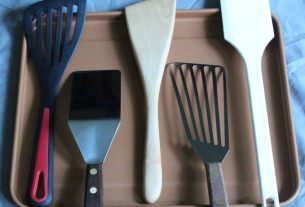Buttermilk, that tangy and creamy delight, lends a subtle twist to baked goods and savory dishes alike.
Curiosity piques when pondering the lifespan of this versatile dairy staple.
How long is buttermilk good for?
As we delve into the depths of this article, we unravel the mysteries of its shelf life, uncover signs of spoilage, and discover the secrets to prolonging its freshness.
Strap in, dear reader, for a tantalizing journey through the world of buttermilk, where knowledge awaits at every turn.
how long is buttermilk good for
Buttermilk is generally good for about two weeks in the refrigerator.
It can be frozen for up to three months.
However, mishandling or leaving it out at room temperature can cause it to go bad sooner.
Signs of spoilage include chunkiness, visible mold, and a strong sour odor.
To extend its shelf life, it is important to refrigerate buttermilk, avoid leaving it out, and handle it with good hygiene practices.
Powdered buttermilk is also an option for avoiding spoilage.
Buttermilk should be used within its recommended time frame for optimal taste and safety.
Key Points:
- Buttermilk is generally good for about two weeks in the refrigerator
- It can be frozen for up to three months
- Mishandling or leaving it out at room temperature can cause it to go bad sooner
- Signs of spoilage include chunkiness, visible mold, and a strong sour odor
- Proper refrigeration and good hygiene practices can extend its shelf life
- Powdered buttermilk is an alternative to avoid spoilage
- Buttermilk should be used within its recommended time frame for best taste and safety
how long is buttermilk good for – Watch Video
💡
Pro Tips:
1. Did you know that buttermilk can actually last longer than regular milk? While milk might go bad within 5-7 days of being opened, if stored properly, buttermilk can stay fresh for up to 2 weeks, or even slightly longer!
2. Despite its name, buttermilk doesn’t actually contain any butter. It is a fermented dairy product made by adding specific bacteria to milk, which causes it to thicken and develop a slightly tangy flavor.
3. Buttermilk has been used as a natural beauty treatment for centuries! Cleopatra, the famous Egyptian queen, was known to bathe in buttermilk as part of her skincare routine, as it was believed to have moisturizing and exfoliating properties.
4. Have you ever wondered why buttermilk is a common ingredient in baking recipes? The acidity in buttermilk helps activate baking soda, leading to a better rise and texture in baked goods. It also helps to tenderize gluten, resulting in a softer, more tender final product.
5. Buttermilk can be a fantastic marinade for meats! The lactic acid present in buttermilk helps break down proteins, making the meat more tender and flavorful. It’s particularly popular for marinating chicken before frying, resulting in juicy and flavorful fried chicken.
Shelf Life Of Buttermilk: Two Weeks In The Refrigerator
When it comes to the shelf life of buttermilk, it is typically about two weeks when stored properly in the refrigerator. This timeframe ensures that the product remains safe to consume and of acceptable quality. It is important to note that the shelf life may vary depending on the specific brand and packaging, so always check the expiration date on the container.
- Shelf life of buttermilk: around two weeks when refrigerated
- Ensure safety and quality by storing it properly
- Check expiration date on the container
Freezing Buttermilk: Up To Three Months
If you have an excess of buttermilk that you cannot use within the recommended two-week timeframe, freezing is a viable option. You can freeze buttermilk for up to three months, which will help prolong its shelf life and reduce waste. It’s important to keep in mind that freezing may slightly affect the texture and flavor of the buttermilk. However, despite these changes, frozen buttermilk can still be effectively used for baking or meat tenderizing purposes.
Mishandling And Room Temperature: Can Cause Buttermilk To Spoil Faster
While buttermilk can last up to two weeks in the refrigerator, mishandling during shipping or leaving it out at room temperature can significantly reduce its shelf life. It is crucial to handle the product with care and ensure it remains refrigerated at all times. Exposure to room temperature allows bacteria to multiply rapidly, leading to spoilage. To maximize the lifespan of buttermilk, always store it properly and avoid leaving it out for an extended period.**
Signs Of Spoilage: Chunky Texture, Visible Mold, Strong Sour Odor
Signs of spoiled buttermilk
Buttermilk, like any dairy product, can go bad over time. It is important to know the signs of spoiled buttermilk to prevent any foodborne illnesses or digestive issues. Here are the key indicators of spoiled buttermilk:
-
Chunky texture: If the buttermilk appears lumpy or curdled, it is a clear sign that it has gone bad. The texture should be smooth and creamy.
-
Visible mold: If you spot any visible mold growth on the surface or inside the container, discard the buttermilk immediately. Mold is a clear indication of spoilage.
-
Strong sour odor: A fresh batch of buttermilk has a slightly tangy aroma. However, if it emits a strong, unpleasant sour smell, it is likely that the buttermilk has spoiled.
If you notice any of these signs, it is best to discard the buttermilk rather than risk consuming it. Consuming spoiled buttermilk can lead to foodborne illnesses and unpleasant digestive issues. It’s always better to be safe than sorry when it comes to spoiled dairy products.
- To avoid spoilage, store buttermilk in the refrigerator at all times.
- Check the expiration date before using buttermilk.
- Use buttermilk within the recommended time frame for best quality and flavor.
Buttermilk Fermentation: Loss Of Buttery Flavor, Becomes Sour
As buttermilk ages, it continues to ferment, resulting in a loss of its buttery flavor while acquiring a progressively sour taste. This is due to the lactic acid produced by bacteria in the buttermilk. Some individuals may find this flavor profile unappealing, while others enjoy the tanginess it brings to recipes.
Nevertheless, it is crucial to use buttermilk within its recommended shelf life to ensure optimal taste and quality.
- Buttermilk ages and ferments, leading to a sour taste.
- The sour taste is due to lactic acid produced by bacteria.
- Some people enjoy the tanginess, while others may dislike it.
- Use buttermilk within its recommended shelf life for best results.
“Using fresh buttermilk is essential for achieving the best taste and quality.”
Extending Shelf Life: Refrigeration, No Room Temperature Exposure, Good Hygiene
To extend the shelf life of buttermilk, there are a few key practices to follow:
- Refrigerate buttermilk at or below 40°F (4.4°C) at all times.
- Avoid leaving it out at room temperature for an extended period, as this promotes bacterial growth and accelerates spoilage.
- Maintain good hygiene. Always ensure that your hands are clean when handling buttermilk.
- Prevent contamination by avoiding direct contact between your hands and the container’s lip.
Remember, following these practices will help keep your buttermilk fresh for a longer period.
- Refrigerate at or below 40°F (4.4°C)
- Avoid leaving it at room temperature
- Maintain good hygiene
- Prevent contamination
“To extend the shelf life of buttermilk, there are a few key practices to follow.”
Freezing Buttermilk: For Baking And Meat Tenderizing Purposes
In addition to extending the shelf life, freezing buttermilk can serve practical purposes in the kitchen. Frozen buttermilk can be a valuable ingredient for baking, providing the same tangy flavor and moisture as fresh buttermilk. It can also be used for tenderizing meat, as the acidity of buttermilk helps break down proteins, resulting in more tender and flavorful dishes. Freezing buttermilk allows you to have it readily available for your culinary needs.
Powdered Buttermilk: An Alternative To Avoid Spoilage
If you frequently deal with spoiled buttermilk or struggle to use it up within the recommended time frame, powdered buttermilk can be an convenient alternative. Powdered buttermilk has a length shelf life at room temperature, making it a great pantry staple. It can be easily reconstituted by mixing it with water according to the package instructions.
However, it’s worth noting that powdered buttermilk is primarily used for baking rather than drinking.
- Powdered buttermilk has a long shelf life at room temperature.
- Convenient alternative to dealing with spoiled buttermilk.
- Easily reconstituted by mixing it with water.
- Primarily used for baking rather than drinking.
“Powdered buttermilk is a pantry staple that provides a convenient alternative to dealing with spoiled buttermilk. It has a long shelf life at room temperature and can be easily reconstituted by mixing it with water. However, it’s important to note that powdered buttermilk is primarily used for baking.”
Powdered Buttermilk: Used Mainly For Baking
Powdered buttermilk is a great alternative to fresh buttermilk in baking recipes. It retains the same tangy flavor and acidity necessary for delicious baked goods, but with the added benefit of a longer shelf life. This makes it a convenient option for those who don’t use buttermilk frequently. Plus, it’s perfect for recipes that require only small amounts of buttermilk, as you can easily reconstitute the desired quantity, reducing any potential waste. When using powdered buttermilk in baking, it’s important to follow the recommended guidelines and adjust the liquid content as needed for optimal results.
Other Alternatives To Buttermilk
If buttermilk is not readily available or you prefer to explore other options, several alternatives can be used in recipes that call for buttermilk. One common substitute is a mixture of milk and lemon juice or vinegar. Simply adding one tablespoon of lemon juice or vinegar to a cup of milk and allowing it to sit for 5-10 minutes will create a similar acidic environment to buttermilk. Another alternative is plain yogurt, which can provide the same tangy flavor and moisture in recipes. Experimenting with these alternatives can yield delicious results in your favorite dishes while accommodating personal preferences or dietary restrictions.
The shelf life of buttermilk is approximately two weeks when stored in the refrigerator. It can be extended by freezing for up to three months. Mishandling or exposure to room temperature can cause buttermilk to spoil faster. Signs of spoilage include a chunky texture, visible mold, or a strong sour odor. Buttermilk continues to ferment, losing its buttery flavor and becoming increasingly sour over time. To extend its shelf life, always refrigerate buttermilk, avoid room temperature exposure, and practice good hygiene. Freezing buttermilk is possible and can be useful for baking and meat tenderizing purposes. Alternatively, powdered buttermilk offers a longer shelf life and is commonly used in baking. Other alternatives, such as milk with lemon juice or vinegar, can be used when buttermilk is unavailable. Understanding these facts and tips will help you make the most of buttermilk while ensuring its safety and quality.
💡
You may need to know these questions about how long is buttermilk good for
How can you tell if buttermilk has gone bad?
One can determine if buttermilk has gone bad by examining its consistency and odor. If the buttermilk is excessively thick, and appears as large lumps when poured out of the container, it is an indication of spoilage. Additionally, a strong and unpleasant sour smell is another sign of buttermilk gone bad. The presence of any mold on the lid of the buttermilk or floating on top is further evidence of spoilage. Essentially, bad buttermilk will have a thick texture with noticeable chunks and a distinctively sour aroma.
Can I use buttermilk past the expiration date?
Yes, you can still use buttermilk past its expiration date. Although the date on the carton indicates the optimal freshness, buttermilk can typically be used beyond that point. The lactic acid producing bacteria added to create buttermilk act as a natural preservative, extending its shelf life for an additional 1-2 weeks, making it suitable for cooking and baking purposes even after the printed date.
How do I make sure buttermilk is still good?
To ensure that your buttermilk is still good, it’s important to follow some key practices. Firstly, make sure to keep the buttermilk refrigerated at all times, as exposure to higher temperatures can cause it to spoil more quickly. Additionally, be conscious of its expiration date and prioritize using it before that time period. When handling the carton, always maintain good hygiene by avoiding contact with the lip of the container, as this can introduce unwanted bacteria. By following these guidelines, you can ensure that your buttermilk remains fresh and suitable for consumption.
What can I do with old buttermilk?
Don’t let that old buttermilk go to waste – get creative in the kitchen! Whisk it into a flavorful dip, sauce, or dressing to elevate your meals. Transform it into a tangy ranch dressing with a hint of herbs, or incorporate it into bean dips for a creamy and savory twist. Additionally, buttermilk can add a delightful touch to caramelized onion dips, enhancing their depth of flavor. So, instead of tossing out your leftover buttermilk, reinvent it into a versatile and delicious accompaniment to elevate your culinary creations.
Reference source
https://www.healthline.com/nutrition/how-long-does-buttermilk-last
https://www.atablefullofjoy.com/how-to-tell-if-buttermilk-is-bad/
http://www.eatbydate.com/dairy/milk/buttermilk/
https://www.thespruceeats.com/how-long-is-buttermilk-good-for-1388303



